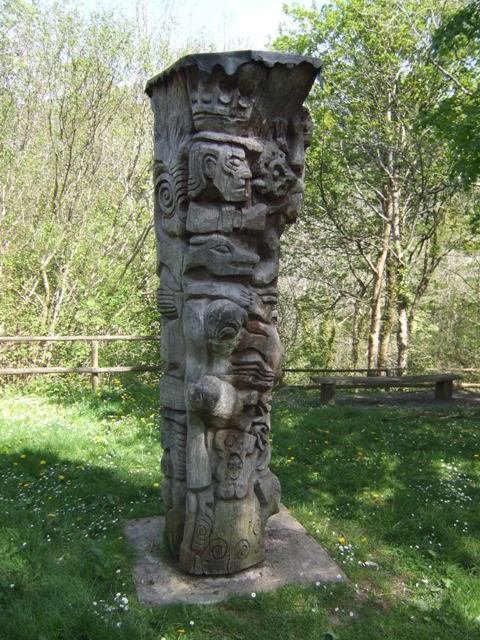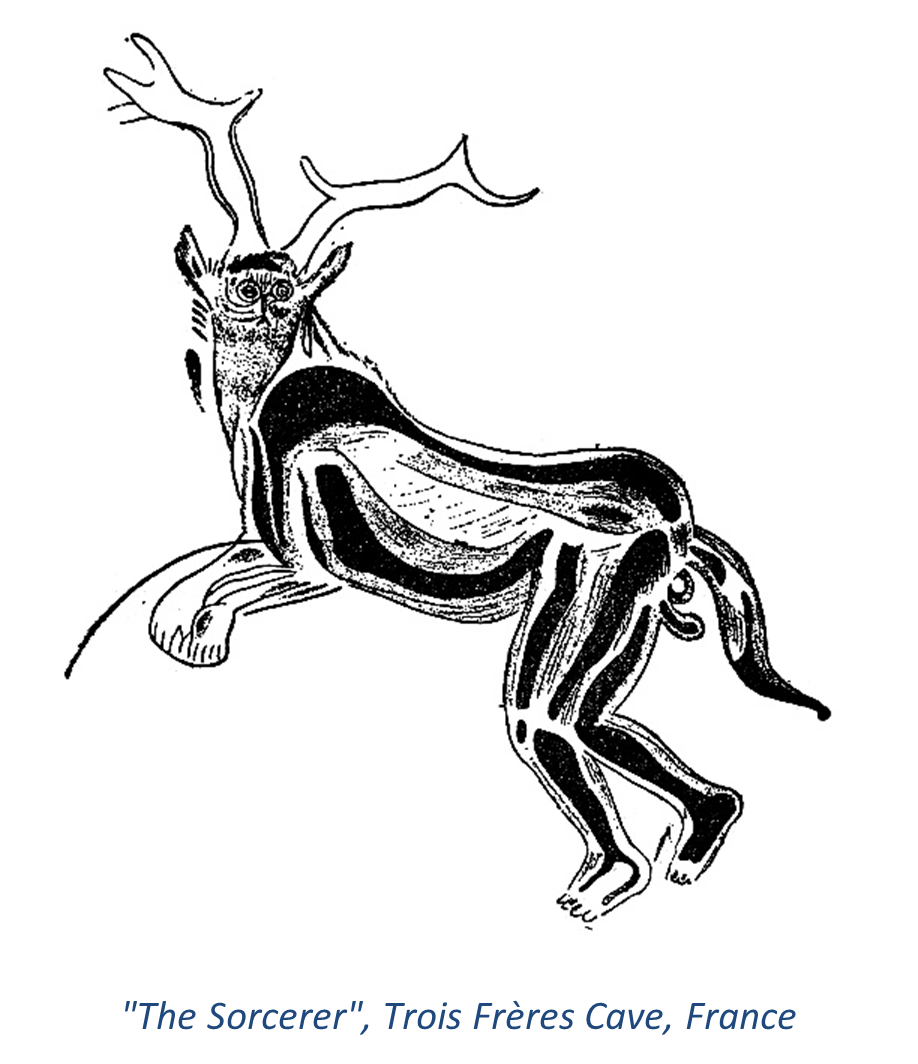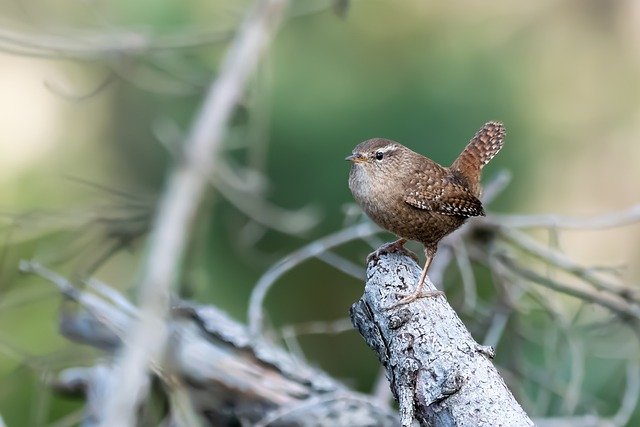An Ostara Tale: Hares and Hounds, Shape and Meaning
Ostara 2022
I have been in a multitude of shapes
Before I assumed a consistent form.
I have been a sword, narrow, variegated
I will believe when it is apparent.
I have been a tear in the air
I have been the dullest of stars….1

Taliesin Sculpture, Llanfair Caereinion, cc-by-sa/2.0 – © John M – geograph.org.uk/p/2382935
The fire is settling to a red glow and pools of darkness expand, but the audience hardly notices and nobody moves as the bard gets to the thrilling part of the story of Cerridwen and Gwion Bach – the shapeshifting chase. Even small children are quiet, barely breathing as they wait to hear what happens next.
Perhaps when the world was younger we would understand not only the story but the symbolism of the transformations chosen by the Goddess and Gwion in ways we no longer do today. But perhaps we can still extract meaning from this tale. Translations vary considerably so I’ve chosen to summarise the story as told by Kristoffer Hughes in his excellent book: Cerridwen: Celtic Goddess of Inspiration.2
Cerridwen, great mistress of herbs and magic, lived in Llyn Tegid, Bala Lake, with her husband Tegid Foel. They had one beautiful daughter and a terribly ugly son whom everyone called Afagddu, which means utter darkness. Cerridwen was sad and worried to see how people turned away from her son and came up with a way to help, to give Afagddu the gift of prophecy and other knowledge. She gathered many herbs and plants, all of which she cast into a cauldron which must boil continuously for year and a day, at which time just three precious drops would spring forth to fill Afagddu with inspiration.
A boy named Gwion Bach (Little Gwion) was hired to keep the fire stoked beneath the cauldron, and as the year and day drew to a close Cerridwen placed Afagddu close to the cauldron to receive the three sacred drops. Then she rested, eventually falling asleep. But the great event happened as she slept: the drops flew from the cauldron and fell not on Afagddu but onto Gwion. Did he push Afagddu out of the way, as some say? We will never know. In any case, Gwion was burned by the drops of brew and instinctively thrust the scalded fingers into his mouth. Immediately he became filled with wisdom and knowledge, including the awareness that Cerridwen would destroy him in her rage. Fortunately he now had the power of shapeshifting and put it to use by transforming himself into a hare, running away even as his shape changed.
As the boy half-expected, Cerridwen could also change her shape and she became a greyhound bitch, gaining quickly on him. Gwion headed for the river and leapt into it, metamorphosing into a salmon as he did so. Cerridwen saw the change and just as quickly became an otter, crashing into the water and speeding after Gwion. Once again, he sensed her close behind and so shot upwards out of the water, shifting shape to that of a tiny wren, but again he was pursued, this time by Cerridwen in the form of a hawk.
Close to exhaustion, Gwion almost despaired but spotted below a farmer’s yard with a mound of wheat. As the hawk approached he pushed himself into the centre of the mound, becoming a single grain of wheat. Cerridwen descended, still in hawk form, but then changed to another bird, this time a black hen. There was no more escape for Gwion, and he was quickly eaten by the hen.
Now an altogether different type of metamorphosis took place and came upon both Cerridwen and the boy. Nine months after he was pecked up by the hen Gwion was birthed as a most beautiful baby boy, so much so that Cerridwen could not bring herself to kill him as she had promised herself. Instead, she put him into a leather bag and threw him into the river. He floated there for many years before being caught in a salmon weir and found by people who gave him the name Taliesin, which means “radiant brow”, because of his extraordinary beauty.

Gwion’s first shift into the shape of a hare would possibly have been expected by our firelit audience. Hares are very often connected with magic, certainly in tales of the Lancashire Witches that I read over and over as a child. Kristoffer Hughes in From the Cauldron Born , tells us about a Welsh witch called Betti’r Bont (Betty of the Bridge) who punished an insolent serving man by turning him into a hare one night, the unfortunate man being further set upon by a greyhound which chased him until spells to release him were cast. He also mentions the 1662 Scottish trial of Isobel Gowdie, adds Hughes, whose testimony included how she would “go into a hare…”, but be harried by a greyhound, and into a trout, then be chased by an otter.3
The next transformation is that of Cerridwen to a greyhound. Such hunting dogs were prized exports from Britain, even before the Romans arrived, and Tacitus noted in the first century CE that British hunting dogs were fast, strong, and clever. The story is so vividly told that you can almost feel the hound’s breath on the back or your neck, but now Gwion made a desperate effort and shifted his form to that of a salmon: an extraordinary fish, known to travel many thousands of miles in its lifetime, starting its existence in fresh water rivers but then swimming to the ocean, only to turn around and return to its exact freshwater birthplace even leaping up waterfalls, to spawn, then die, a feat known to the Sumerians, suggesting that the fish has been revered for many thousands of years.
In answer to Gwion’s wren, Cerridwen also burst out of the river and took wing, in her case as a hawk – and it’s worth noting in passing that Cerridwen, according to Hughes,4 always shifts into a female animal shape. Female hawks are also said to be the better hunters.

The chase takes place in the story and probably lasts for a few minutes, but as with the gestation of Gwion into Taliesin, it also took place over much longer, perhaps aeons, so that Gwion’s life as hare initiated him into the mysteries of earth and maybe of matter in the whole universe. Then he was a salmon, initiate of water, the element that allows for the development of life, and of course with the spiritual dimension suggested by all the holy wells, rivers and springs of Britain. It’s tempting to allot the final section of grain/hen to fire. However, as Hughes points out, fire is what brings about the transformation of the other elements, also that the Celts conceptualised everything in a tripartite fashion, they believed that only three primary elements existed and that they were transformed by fire.5 Gwion was put in his leather bag and thrown into the sea on 29 April – very close to the fire festival of Beltane. Of course the initial fire was that under the cauldron, transforming the brew itself, so that fire underpins the entire process.
Joseph Campbell and other mythographers have suggested that there is a common theme to hero myths which have a basic pattern that magnifies the formula of all rites of passage: separation, initiation and return, all of which apply to Gwion’s transformation into Taliesin. The chase may have started out simply enough, but by the time of Taliesin’s rebirth, when he is found floating in the fish weir, we have a full-blown transformation and initiation. To give the last word to Kristoffer Hughes: “The end goal of this initiatory function is to become Taliesin in the literal sense as a radiant brow.”6
Geraldine Charles
15 March 2022
- https://www.ancienttexts.org/library/celtic/ctexts/t08.html accessed 27/2/22
- Kristoffer Hughes, Cerridwen, Celtic Goddess of Inspiration, Llewellyn Publications, 2021
- Kristoffer Hughes, From the Cauldron Born, Llewellyn, 2017
- Ibid
- Ibid
- Kristoffer Hughes, Cerridwen, Celtic Goddess of Inspiration, Llewellyn Publications, 2021

